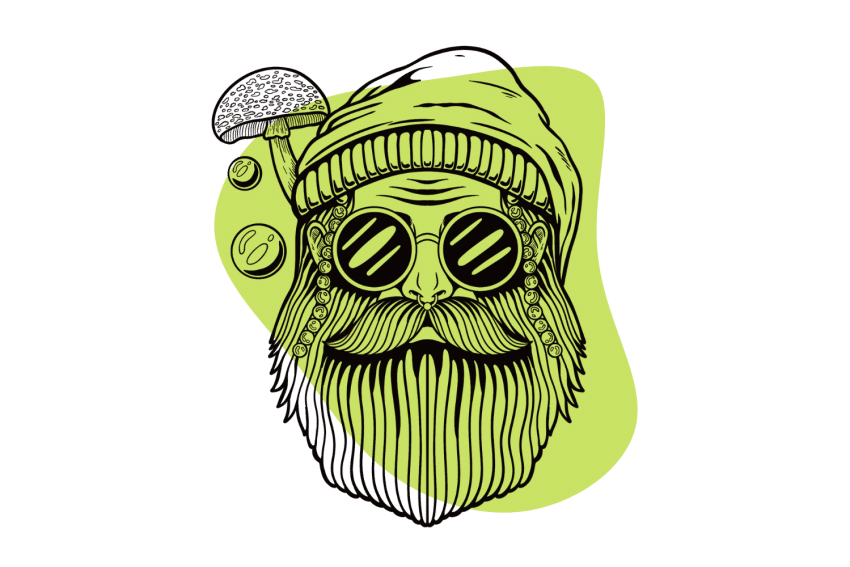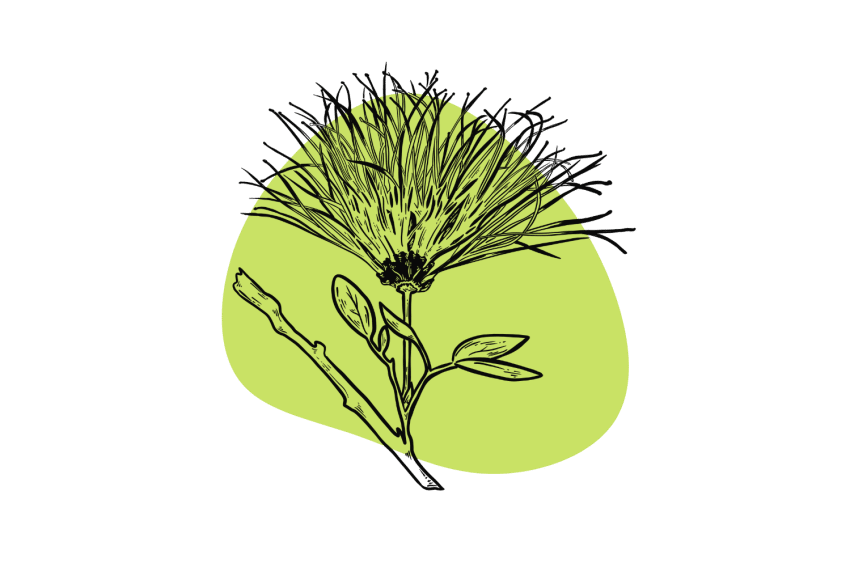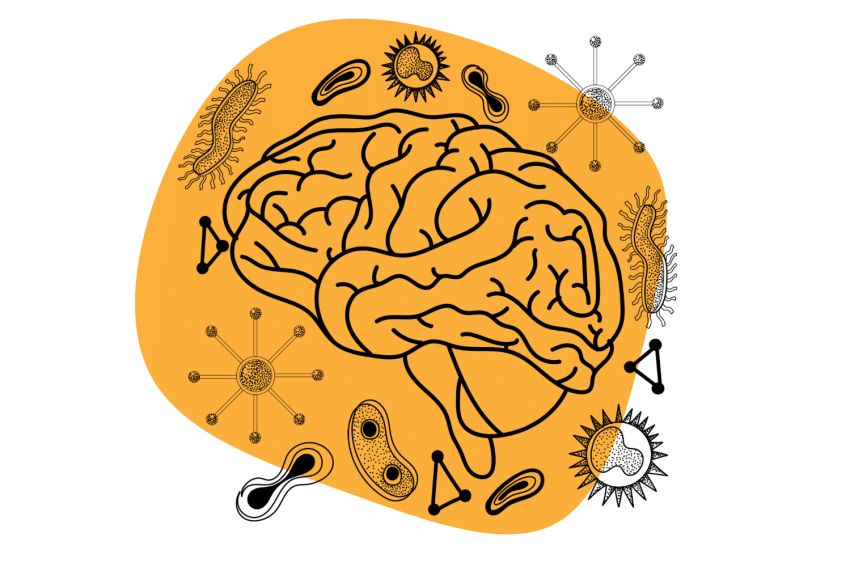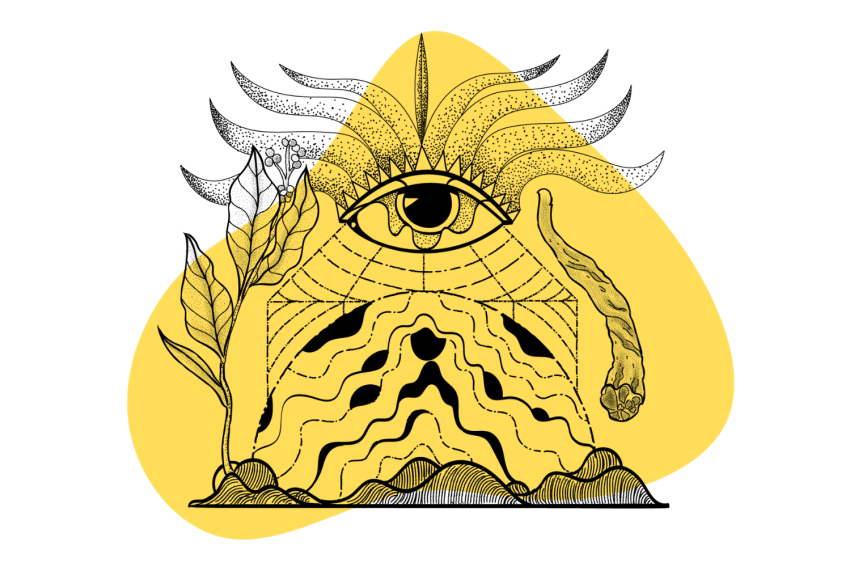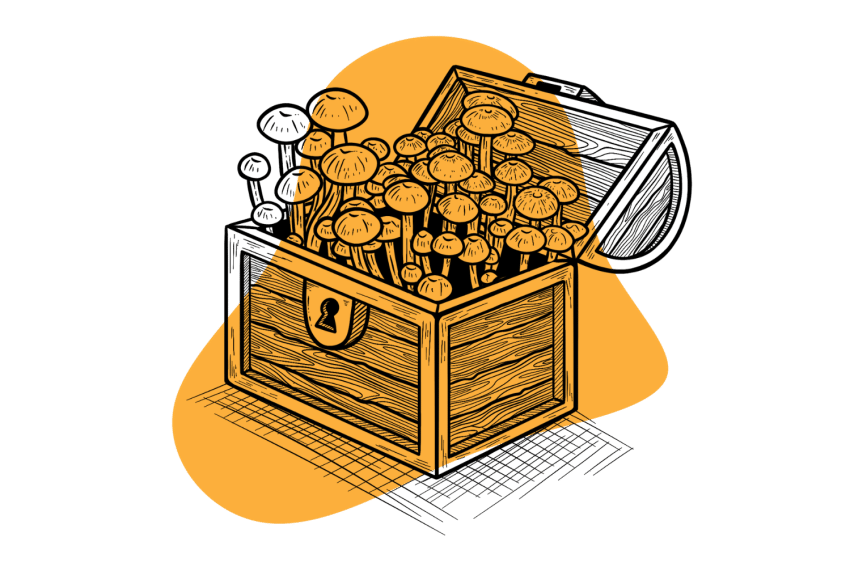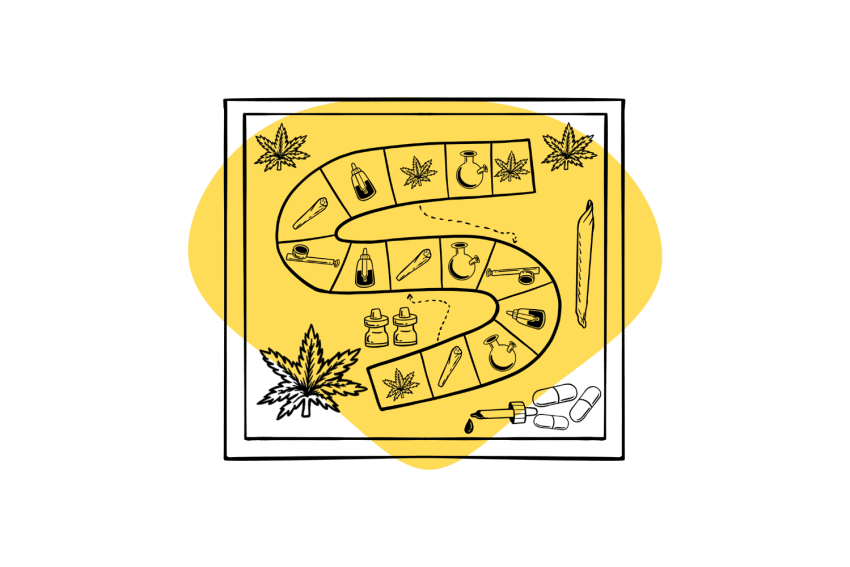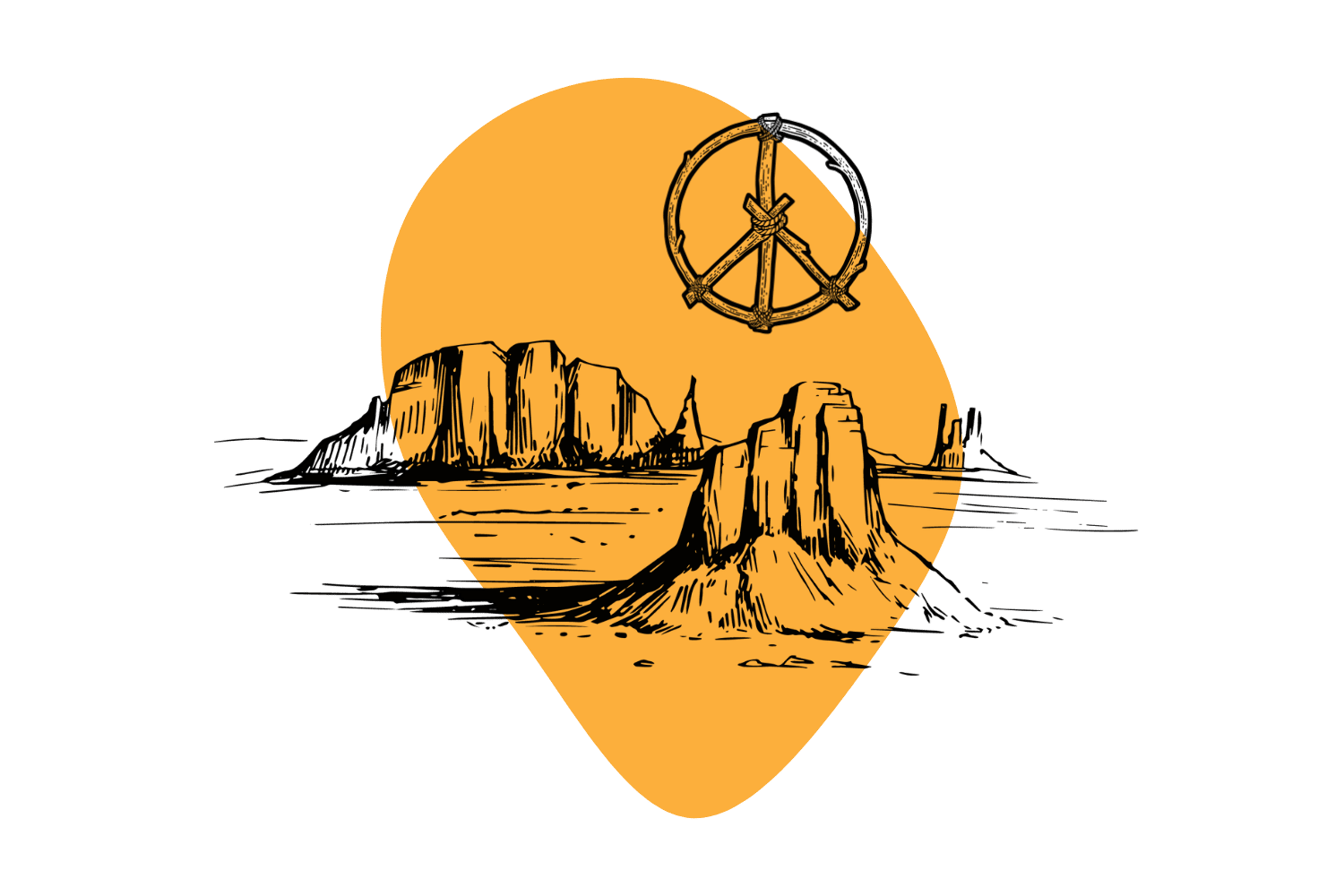The Case for Legalizing Drugs (Yes, All of Them)
Despite the pitfalls of criminalization, many people feel uneasy about legalizing drugs, often deciding arbitrarily that some are “dangerous” ☠️ while others are not.

Humans have been using intoxicating substances since the dawn of humanity itself. Opium — from the same flower we get morphine and heroin — appears in ancient Sumerian tablets from 2100 BC [1]. Other evidence for drug use goes back to early hominid ancestors — roughly 200 million years [2].
The mood surrounding drugs has only shifted toward demonization and criminalization over the past few centuries.
The problem is simple: people still like drugs, and they can find them with or without the government’s permission. Albeit often in worse, less pure capacities, which can lead to contamination, accidental overdose, and other concerns. Illegal drug markets force production into clandestine labs and generate billions of dollars for criminal organizations.
There are 4 outstanding arguments for legalizing all drugs:
- The Health Argument — illegal drug manufacturers often produce drugs with uncertain potency and may be adulterated or contaminated with dangerous chemicals.
- The Moral Argument — the use of any given compound should remain a matter of freedom and personal choice.
- The Second Chances Argument — turning addicts into criminals limits their potential for happiness, which results in an even stronger desire to escape through drug use.
- The Economic Argument — illegal drug markets earn criminal enterprises billions of dollars every year.
Let’s dive into criminalization and why it isn’t an effective strategy to curb problematic drug use.
4 Solid Arguments for Legalizing All Drugs
Arguments for the legalization of drugs range from practical to moral and leave little room for opposition. There is a solid health, moral, rehabilitative, and economic argument for legalizing all drugs.
Here is more information on each of these.
1. The Health Argument
This argument suggests legalizing drugs reduces the risk of contamination, adulteration, and uncertain potency. These represent the major issues with drugs produced by clandestine sources, which are the only source of illegal substances.
At the end of 2020, the CDC issued a press release stating a drastic increase in deaths attributed to cocaine overdoses. In this statement, they said:
“Overdose deaths involving cocaine also increased by 26.5 percent. Based upon earlier research, these deaths are likely linked to co-use or contamination of cocaine with illicitly manufactured fentanyl or heroin.”
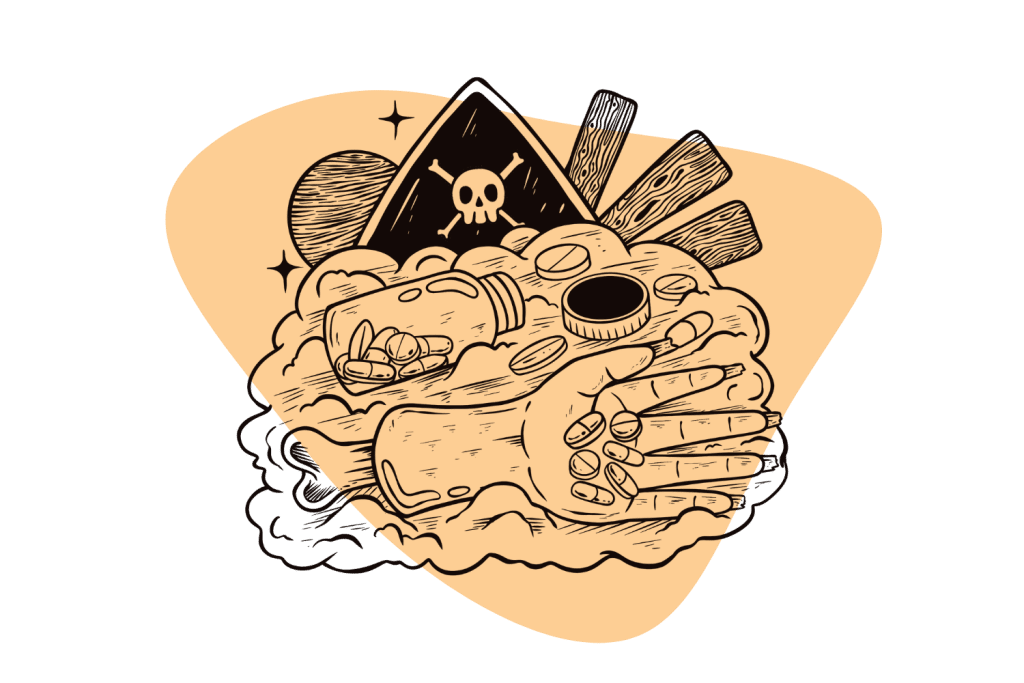
The term “co-use or contamination” refers to the trend of cocaine contaminated with fentanyl. This significant increase in deaths was likely due to the criminalization of cocaine, pushing users to seek out their drug in the clandestine market.
To showcase the benefit of legalization, you only have to look as far as Mac Miller — the late rapper who tragically died of an unintentional opioid overdose. His dealer testified he was unaware the counterfeit oxycodone pills contained fentanyl when he sold them to Miller.
Whether his dealer knew or not isn’t the point, however. Consider how much money the wealthy, famous rapper likely spent on drugs each month and the relationships he must have forged with his dealers.
If he’s not safe from this outcome, how could anyone else possibly stand a chance? There’s no hope for an unhoused person in the grips of use disorder in a scenario where even a celebrity is at risk.
Whatever your beliefs are surrounding opioid use, the fact remains: if Mac Miller had taken real oxycodone, he’d be alive today.
Related: How to Test Psychoactive Substances With Drug Testing Kits
2. The Moral Argument
This argument suggests that all humans should be free to use whatever substance they want as long as it doesn’t cause harm to others.
We don’t ban alcohol, tobacco, caffeine, acetaminophen, and many other drugs; we trust adults (and sometimes kids) to handle them responsibly. While a growing movement sees the importance of doing this for marijuana, mushrooms, LSD, and other drugs, it should extend far beyond that.
Research shows us one of the biggest contributors to addictive behaviors is the feeling of shame [4]. Criminalization — and even decriminalized environments to a lesser extent — perpetuates the shame and stigma associated with drug use.
For instance, sending someone to see a health board because they have opioids on them for self-medicating. While they know what the drug is for and what they’re doing with it, a panel of “experts” has to weigh in on whether they agree.
Putting trust in drug users to regulate their consumption while controlling the quality of drugs would change the paradigm. We don’t need to associate shame with drug use, and help should be available when drug users want it.
Through this, programs can work to build up the person behind the drug use and be there as a resource. Nobody will move if they don’t want to — forcing people to take a certain action won’t result in lasting change.
3. The Second Chances Argument
This argument suggests that criminalizing people for compulsive drug use prevents addicts from accessing treatment and eventually reintegrating as productive members of society.
Convicts face fines they can’t afford, denial of treatment or opportunity for work because of prison sentences, and separation from support groups like friends and family only limits one’s potential for happiness. As a result, they often have an even stronger desire to seek escape through drug use.
Decriminalizing these drugs gives users a second chance (and a third, a fourth, and so on) to seek the help they need and retain a sense of meaning in their lives. Whether they take that opportunity or not is up to them, but isn’t the axiom “people can’t get help until they want it?”
Decriminalization takes away the threat and reality of jail time for substance use, but it doesn’t do much to protect the user. Even in places like Portugal, the first country to decriminalize all drugs, a lack of harm reduction services — things like safe injection sites, free drug testing, and other services — still leaves people vulnerable [3].

Portugal demonstrates the need for legalization over decriminalization to protect people who use drugs from dying before they even reach a second chance.
Harm reduction actions ensure that, regardless of your intent for drug use, you shouldn’t have to use alone. Too many people die alone in abandoned houses or low-traffic areas because they hide their illegal drug use.
Additionally, opioid overdoses are preventable, but criminalization prevents people from calling for help. The stigmatization of drug use means people die before they can even seek help.
Responses opposing this rarely go beyond obvious contempt for drug users or people “breaking the law.” If the goal truly is to assist and rehabilitate people in the grips of a mental health condition, we have to consider an approach that takes mental health into account first.
Otherwise, we will always miss out on the biggest piece of the puzzle: the person who’s using the drug.
4. The Economic Argument
This argument suggests that allowing drugs to enter the public market guts the major economic driver of criminal organizations.
Illicit drug trafficking makes up an estimated 2–5% of the Gross Domestic Product (GDP) earnings for the entire globe. The United Nations estimates this to account for between $800 billion and $2 trillion every single year.
This money — far removed from the local dealer peddling on the street — exists solely to fund crime and criminal enterprise. The range is so extensive because it’s tough to know for sure due to the money laundering efforts needed for them to use the money.
We also have very little way of knowing what they’ll use it for.
In 2004, terrorists trafficked drugs into Madrid, swapping them for 440 pounds of dynamite, which they would use to kill 191 people and wound another 1,400. A senseless act of terrorism funded through the criminalization of drugs.
Legalizing marijuana moves money out of the hands of violent cartels and gangs and into the hands of the government and (hopefully) the people. A 2018 report found that state-level marijuana legalization alone undercut smuggling by 78% over five years.
Imagine what we could accomplish with the global legalization of all drugs. Imagine an $800 billion — on the low end — infusion into the economy.
What Have Criminalizing Drugs Accomplished?
After 50 years and over $1 trillion, what victories have the government claimed in the “War on Drugs?” They have not eradicated drug use, reduced overdose deaths, or even diminished the supply of drugs.
The only accomplishment of the War on Drugs is the exploitation and punishment of marginalized communities. People will always find a way to find the drug they are craving, and we have done nothing to address that.
Abstinence-only 12-step programs are quick to call addiction a mental disease but slow to suggest tapering off drug use alongside therapy as treatment. If we were in a world of regulation and legalization, people could safely use their drugs while addressing their needs and decreasing their use.
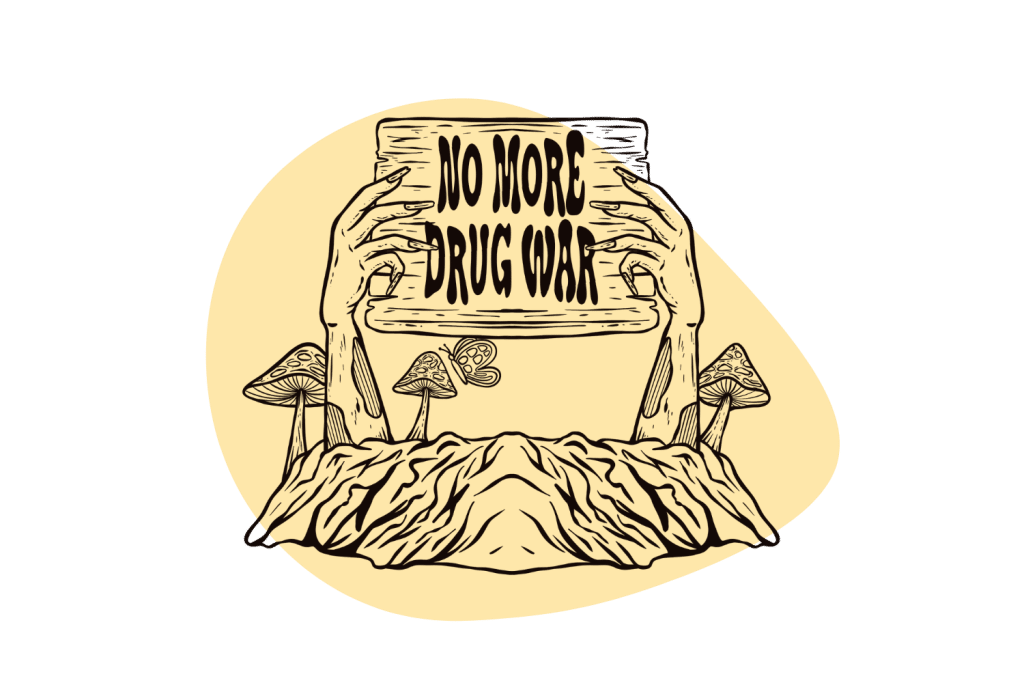
Criminalization only succeeds in ensuring users have to enter dangerous situations to buy less potent, potentially impure substances. The legislation of our country treats this as a punishment for drug use, but why are we punishing people for “mental disorders?”
Not only are we punishing them, but we’re actively limiting research that could help millions of people. Evidence is mounting on the safety and effectiveness of psychedelics for mental health and addiction disorders.
It’s time we make drastic changes to the laws to allow researchers — and eventually the public — access to something that could be so life-changing.
Decriminalization vs. Legalization
Decriminalization is when the government decides a particular crime should no longer carry a criminal punishment — but this doesn’t remove all consequences. Legalization removes criminal penalties for substance use and opens up drug production, regulation, and sale to consumers.
Even when decriminalized, there’s a good chance you could face fines for possessing or consuming drugs. However, these fines don’t result in a criminal record or the need to serve jail time.
Here’s a breakdown of the difference between legalization and decriminalization:
| Legalization | Decriminalization | |
| Criminal Record? | No | Maybe |
| Safe production and sale of drugs | Yes | No |
| Personal Use | Legal | Legal, with limitations |
| Protects the Drug User | Yes | No |
| Who Produces the Drugs? | Businesses, with restrictions and regulations | Criminal enterprises and clandestine drug makers |
| Where are the Drugs Made? | In a sterile environment, following protocol | Illicit labs, often with poor conditions and environments |
The main goal of decriminalization is to address the root concern of drug use and focus the law on the suppliers of drugs rather than the users.
This comes with some immediate problems:
- Who decides what the “personal quantity” of each drug is? Portugal defines a personal quantity as more than ten days’ worth of each drug [3]. If you’re a heavy user, this may result in the need for more frequent purchases.
- Why should there be any punishment at all for an act the country says is no longer illegal? Fines often feel like a tax on drug users instead of having any form of corrective measure.
- Decriminalizing drugs doesn’t help users ensure a safe supply of the drug they want. Nor does it set up any kind of framework for them to seek help if needed.
Looking Forward: Is There a Path to Legalization?
Research shows that some psychedelics are incredibly effective at treating PTSD, depression, and anxiety. This alone is enough reason to rethink our current laws. But it goes deeper.
Given the link between shame and substance use, shouldn’t the logical next step be a form of treatment that doesn’t rely on this emotion? Current recovery programs are ineffective at best and money-hungry relapse factories at worst.
Unfortunately, the government and media have put tremendous resources towards furthering the narrative that AA and similar programs are the only routes to recovery. While these work for some, the success rate is abysmal — some say it may even be as low as 5–10%.
As it stands, there are several efforts toward decriminalization but a minimal movement toward legalization. As cities, states, and provinces start experimenting with decriminalizing all drugs, hopefully, the momentum will be enough to carry us out of the cloud of disinformation.
References Used
- Norn, S., Kruse, P. R., & Kruse, E. (2005). History of opium poppy and morphine. Dansk medicinhistorisk arbog, 33, 171-184.
- Saah, T. (2005). The evolutionary origins and significance of drug addiction. Harm reduction journal, 2(1), 1-7.
- Rêgo, X., Oliveira, M. J., Lameira, C., & Cruz, O. S. (2021). 20 years of Portuguese drug policy-developments, challenges and the quest for human rights. Substance abuse treatment, prevention, and policy, 16(1), 1-11.
- Rahim, M., & Patton, R. (2015). The association between shame and substance use in young people: a systematic review. PeerJ, 3, e737.

